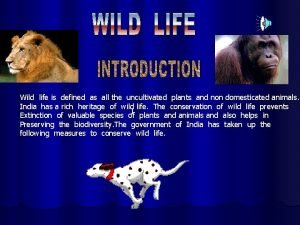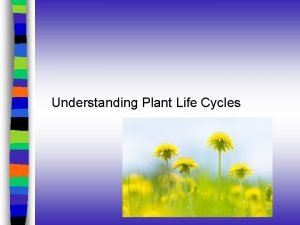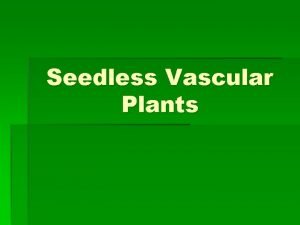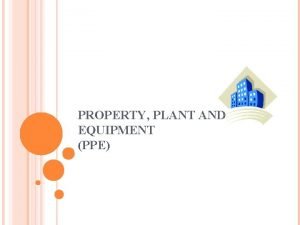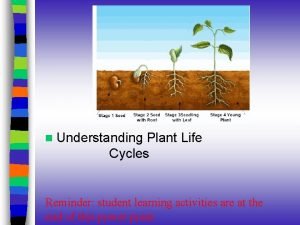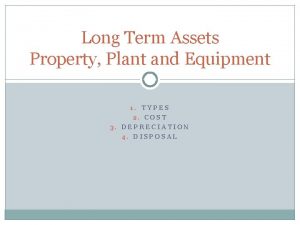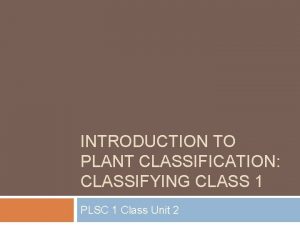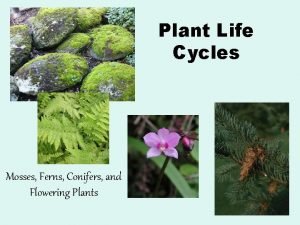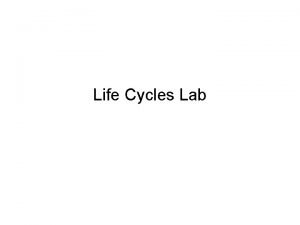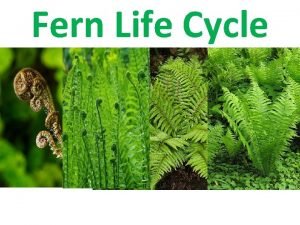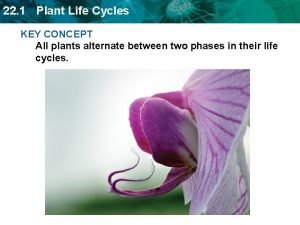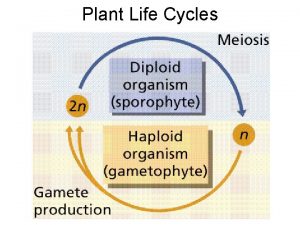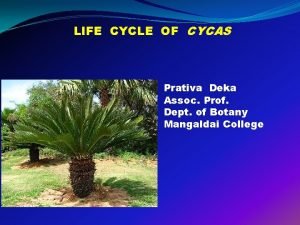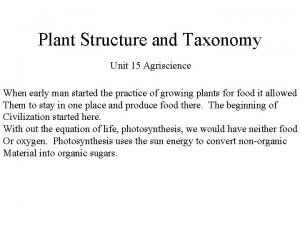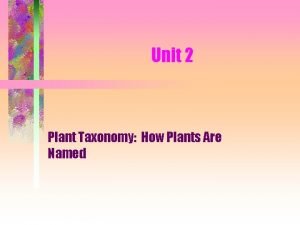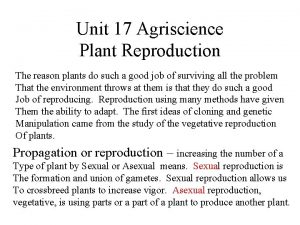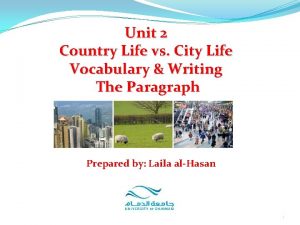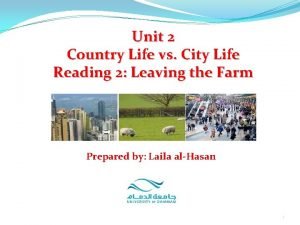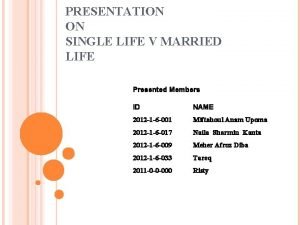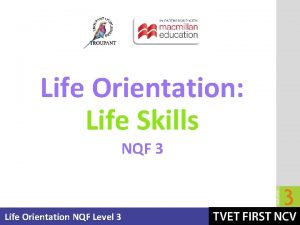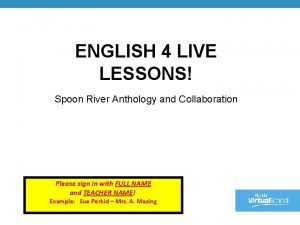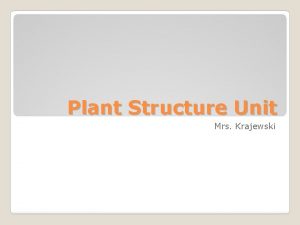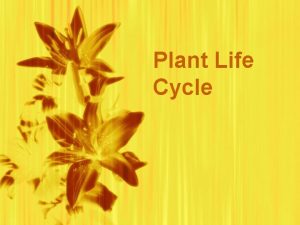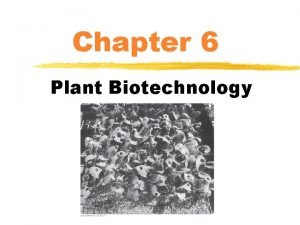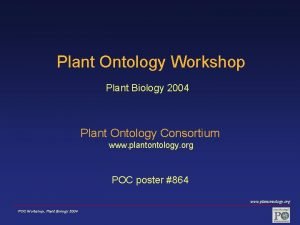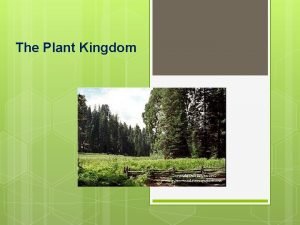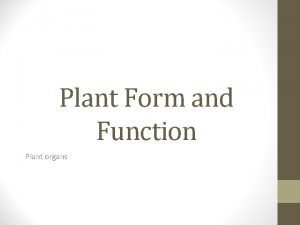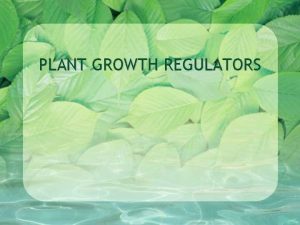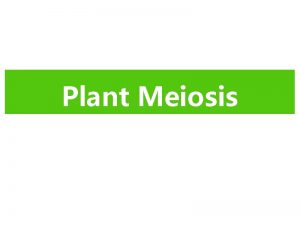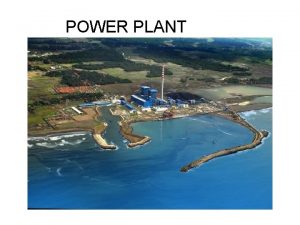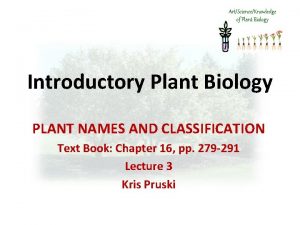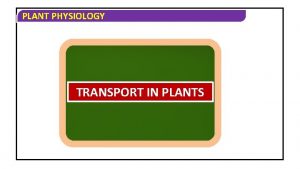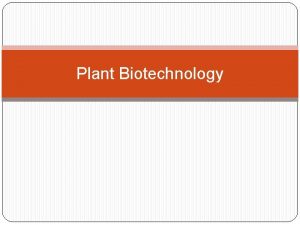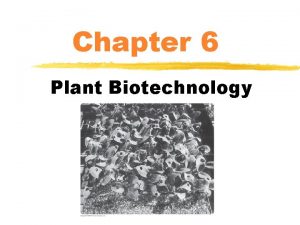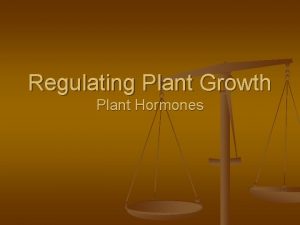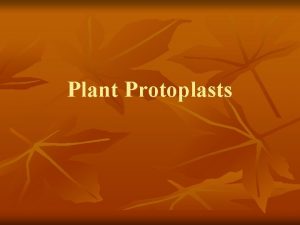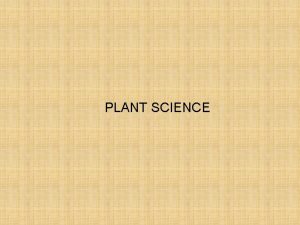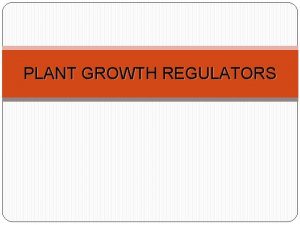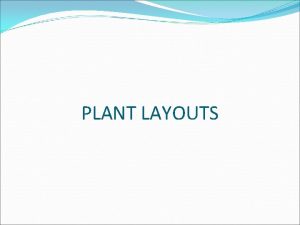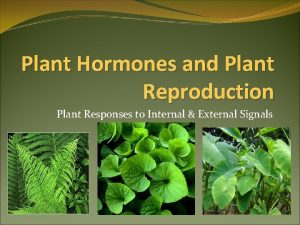PLANT LIFE 4 th Q Unit 1 How

































- Slides: 33

PLANT LIFE 4 th. Q: Unit 1

How important is plant? • Plants make food, oxygen, provide habitats for animals, help to make and preserve soil, provide useful products for people (including food, fibers, medicines, and etc. ) and help to beautify our environment.

Photosynthesis • Photosynthesis is a process by which green plants turn raw materials like carbon dioxide and water into glucose in the presence of light.

THE IMPORTANCE OF WATER IN PLANT • 95% of the fresh weight of a plant is water. • Water transports substances such as minerals and vitamins required for plant growth. • Water maintains plant’s turgidity.

Transpiration • During hot weather, water from plants evaporate to the environment through small openings in the leaves called stomata. This process is known as transpiration.

stomata • It’s an organ that regulates the water loss in plant. • Stomata consists of guard cells that controls the opening of the stoma. • Stoma closes at night to reduce the loss of water and opens at daytime to allow exchange of carbon dioxide and oxygen for photosynthesis.

The Role of Transpiration • It helps in transporting water and minerals to the plant. • Xylem carries water and dissolved mineral from roots to the stem and the leaves. • Phloem transports glucose from the leaves to all parts of the plant.

Sexual Reproductive System of Flowering Plants Flowering plants reproduce through sexual reproduction. • Sepals – protect flower during bud stage. • Petals – are modified leaves that attract insects for pollination and protect the stamen and pistil of the flower. • Stamen – male part – Anther – has pollen sacs inside it which are the place for pollen grains formation. • Pistil – female part – Stigma – has sticky surface to enable it to attach with the pollen grain. – Style – joins the stigma with the ovary and allows the pollen tube to grow towards the ovules. – Ovary - protects the ovule which is an ovum (female gamete).

Asexual Reproduction in Non-flowering Plants Asexual reproduction is a type of reproduction that does not involves reproductive cells. Spore formation: • Ferns, Mosses, Mushrooms • Vegetative reproduction – Stems (sugarcane), leaves (aloe vera), suckers (pineapple), and underground stems (onion)

Pollination • It is the transfer of pollen grains from anther to the stigma of a flower. • Agents of pollination are wind, water, animals, and insects to transfer the pollen grains.

Pollination to Fertilization Step 1: An insect carries pollen from one flower to another Step 2: The stigma catches the pollen Step 3: The pollen tube grows down to the ovary Step 4: The pollen fertilizes the ovule Step 5: The ovules develop into seeds Step 6: The ovary develops into a fruit

Wind Vs. Insect Pollinated Flowers

2 Types of Pollination • Self-Pollination: occurs between the same or different flower of the same plant. • Cross-Pollination: occurs between the flowers of different plants.

Cross-Pollination VS. Self-Pollination Difference Cross-Pollination Self-Pollination a. Number of plants involved Two One b. Characteristics of the offspring Healthy and resistant to the environmental changes Weak and not resistant to the environmental changes c. Variety More Less

Wind and Insect Pollinated Flowers

Seeds vs. Spores SEEDS • Larger in size and can be seen and touched easily • Multicellular • located either in the fruit or flower of flowering plants • germinates more easily • disseminated by animals that eat the fruit of flowering plants SPORES • Smaller or microscopic size • Unicellular • Located underneath the leaves of non-flowering plants • Spores requires a wet environment to germinate • Simply fall off or spread by the wind to propagate

Germination of Seed • During germination, the embryo will develop into a shoot, seedling and roots respectively.

Condition for Germination • Suitable Temperature for enzyme reaction, Air for respiration, and Water to soften the testa (or seed coat).

Nutrients in Plants Macronutrients • Such as carbon, hydrogen, oxygen, nitrogen, phosphorus, potassium, calcium, magnesium, and sulphur in larger quantities. Micronutrients • Such as boron, ferum, zinc in smaller quantities. These elements are known as traced minerals. In the natural, plants get them from the soil. Farmers use fertilizers as alternative when these elements are quickly used up in the soil.

Mineral Requirements in Plants Macronutrient Effects of Deficiency Nitrogen Stunted growth Leaves turn yellow and drop Phosphorus Poor root growth Leaves turn dark green with red or purple spots Potassium Premature death of plants Leaves turn yellow at the edges Calcium Stunted growth Leaves become distorted and cupped Magnesium Areas between veins in leaves turn yellow Leaves become cupped Sulphur Young leaves turn yellow and drop

MONOCOT VS. DICOT COTYLEDON is an embryonic leaf in seedbearing plants, one or more of which are the first leaves to appear from a germinating seed.

Angiosperm VS. Gymnosperm Angiosperms, also called flowering plants, have seeds that are enclosed within an ovary (usually a fruit), while gymnosperms have no flowers or fruits, and have unenclosed or “naked” seeds on the surface of scales or leaves.

Stimuli and Responses to Plants in the Environment 4 COMMON TROPISMS IN PLANTS 1. Phototropism 2. Geotropism 3. Hydrotropism 4. Thigmotropism

Phototropism • It is the growth of plants in response to light. • Positive Phototropism is when the shoots grow towards light. • Negative Phototropism is when the roots grow away from light.

Geotropism • It is the growth movement shown by plants in response to gravity.

Hydrotropism • It is the growth movement shown by plants in response to water.

Thigmotropism • It is a growth response by plants to touch or contact with a solid structure.

TROPISM & NASTIC MOVEMENT TROPISM NASTIC MOVEMENT • Are growth responses of plant to external stimuli. • Directional Movement • Positive and Negative Tropism • Usually, plants response for growth • Are movements made by plants in response to external stimuli that may come from any direction • Usually, plants response to touch for defense

NASTIC MOVEMENT • Seismonastic – a type of nastic movement in response to touch to protect the plants against damage.

Application of Vegetative Reproduction • Technology of vegetative reproduction includes stem cutting and tissue culture. • STEM CUTTING – a method where a piece of twig is cut off from the parent plant and then placed in the soil. After a few days, grows into a new plant. (Sugar Cane) • TISSUE CULTURE – a method of reproduction which produces new plants called clone from the tissue of the parent plant. (Carrot)

TISSUE CULTURE

BIOTECHNOLOGY • • • What is Biotechnology? What are the different types of Biotechnology? What is Agricultural Biotechnology? State one benefit of Agricultural Biotechnology. How can Biotechnology help the environment? State one advantage of using Biotechnology.

 Freetutorical.com harvest land
Freetutorical.com harvest land Introduction in plant breeding
Introduction in plant breeding Plant introduction in plant breeding
Plant introduction in plant breeding Plant introduction in plant breeding
Plant introduction in plant breeding Tronsmo plant pathology and plant diseases download
Tronsmo plant pathology and plant diseases download Tronsmo plant pathology and plant diseases download
Tronsmo plant pathology and plant diseases download Albugo eye
Albugo eye Unit 10, unit 10 review tests, unit 10 general test
Unit 10, unit 10 review tests, unit 10 general test Non domesticated animals and uncultivated plant life
Non domesticated animals and uncultivated plant life Annuals plant life cycle
Annuals plant life cycle Life cycle of seedless plants
Life cycle of seedless plants Ppe
Ppe Perennial life cycle
Perennial life cycle Useful life of property plant and equipment
Useful life of property plant and equipment Risa jordan
Risa jordan Useful life of property plant and equipment
Useful life of property plant and equipment Dead plant roots
Dead plant roots Life of a plant by risa jordan
Life of a plant by risa jordan Conifers and ferns
Conifers and ferns Meiosis
Meiosis Ela familiar
Ela familiar Fern alternation of generations
Fern alternation of generations A plant's life cycle alternates between and generations.
A plant's life cycle alternates between and generations. Plant life cycles and alternation of generations
Plant life cycles and alternation of generations Life cycle of cycads
Life cycle of cycads Unit 15 plant structures and taxonomy
Unit 15 plant structures and taxonomy How plants are named
How plants are named Unit 17 plant reproduction
Unit 17 plant reproduction Vocabulary city life
Vocabulary city life City life vs country life
City life vs country life Polynomial real life
Polynomial real life Single life vs married life debate
Single life vs married life debate Slidetodoc.com
Slidetodoc.com Country life vs city life compare /contrast
Country life vs city life compare /contrast








